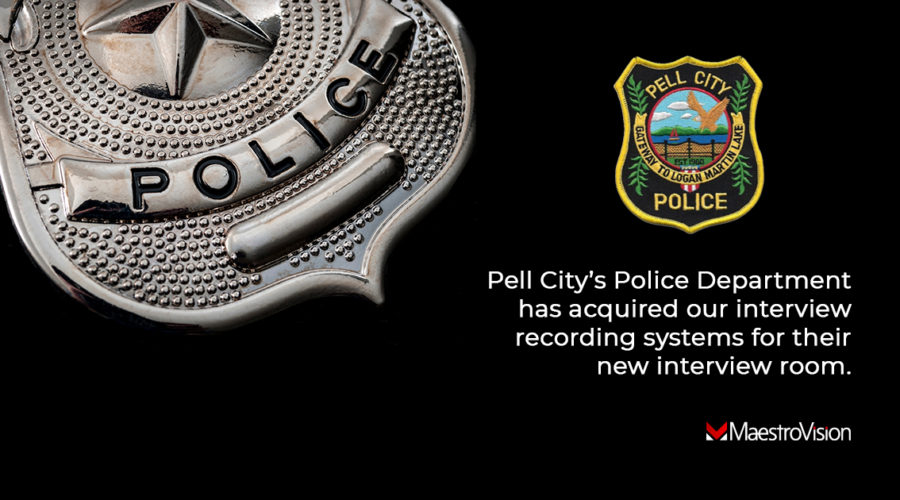The Pell City Police Department, in Alabama, furnishes their interview room with MaestroVision’s technology, including our Recording System and Video Library.

In a constant effort to improve its productivity, the Pell City Police Department has just acquired a filmed interview room solution including MaestroVision’s Interview Recording System (KEYSERV), the Video Library (VEOTEK) and a custom-designed desk to fit ergonomically all the recording equipment.
MaestroVision’s complete solutions provide all you need to manage your evidence. From recording, cataloguing, storing, indexing and retrieval of all digital evidence available.
MaestroVision’s solutions will help the Pell City Police Department in fulfilling their mission, as they are “committed to the delivery of courteous, professional law enforcement and community services to the citizens of Pell City and providing professional police service, while maintaining our small town values and atmosphere.”
Pell City Police Department
1905 1st Ave N, Pell City, AL 35125, United States


The investment in this new technology, designed and manufactured by MaestroVision, offers the possibility of indexing all notes with interrogations. This feature makes it possible to find and quickly review a specific moment in an interrogation, hence saving valuable time to the investigators. Moreover, this system is of a disconcerting simplicity. It is no longer necessary for an investigator to use the services of a technician to use the system.
For more information about our solutions, call us at 1-888-424-5505.
Read More
